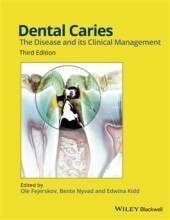How big is the problem? Epidemiological features of dental caries - important limitations to the DMF index
3 important questions on How big is the problem? Epidemiological features of dental caries - important limitations to the DMF index
What are in general limitations to the DMF index?
- The philosophical basis for giving equal weights to untreated caries (D), restorations (F), and missing (M) teeth or surfaces is questionable
- The number of teeth/surfaces at risk to DMF/dmf is not known. DMF counts, therefore, have little meaning unless age is stated
- DMF/dmf data are of little use for estimating treatment needs
What are limitations of the M component?
- Teeth may be missing for reasons other than caries (bv periodontal diseases, orthodontics, trauma). Information on the reasons may be difficult to elicit
- Tooth extractions are heavily influenced by the dentist's view on treatment options and the patient's willingness/ability to pay for treatment
- Traditionally, a missing tooth will count as four or five surfaces in the DMFS/dmfs, depending on tooth type. However, it is quite unlikely that all tooth surfaces have been carious, whereby some overestimation of caries experience may be anticipated in the M component contribution
What are limitations of the F component?
- The presence of a restoration in a surface may reflect restorative treatment principles (extension for prevention; preventive restorations) rather than dental caries
- Sealants may be placed for preventive or cosmetic reasons, in which case they do not signify caries (restorations); or they could be placed as a treatment for early, noncavitated active caries lesions, in which case they should be counted as caries related
- Sealants, composite, and resin restorations can be hard to detect, and this may lead to underestimation
The question on the page originate from the summary of the following study material:
- A unique study and practice tool
- Never study anything twice again
- Get the grades you hope for
- 100% sure, 100% understanding































